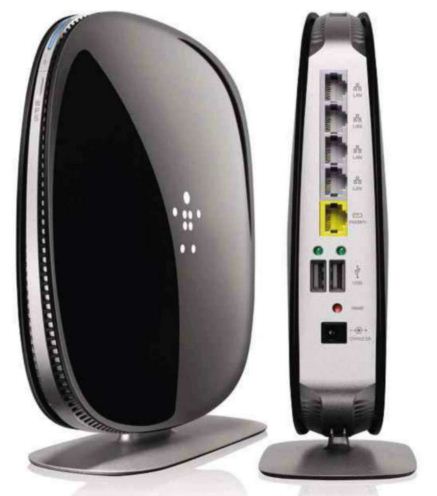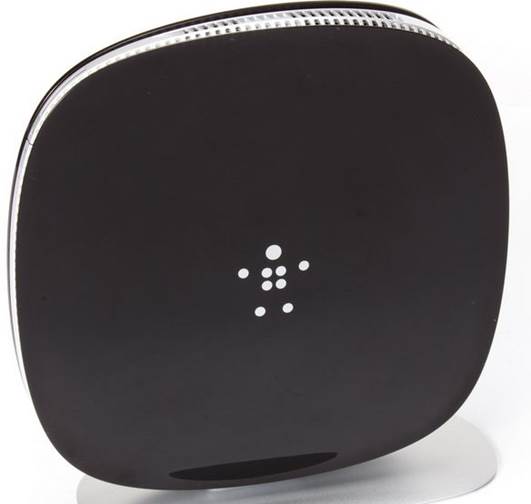Belkin jumps on the AC Wi-Fi
bandwagon with the impressively scaled AC1200 DB.
The headlong rush towards 802.11.ac Wi-Fi
shows no signs of T stopping, and now Belkin has entered the fray with its own
AC flavored router, the AC1200 DB. I've mentioned before that this isn't a
ratified standard, so those who wish to join the pre-AC scrabble need to be
wary of what ratification might ultimately mean.
Nevertheless, what I will say for Belkin is
that it's being more realistic in quoting speeds than others, as it's promising
that this device is 2.8 times faster than a dual-antenna 802.11n Wi-Fi router:
a level that's more plausible than others are promoting.

The
headlong rush towards 802.11.ac Wi-Fi shows no signs of T stopping, and now
Belkin has entered the fray with its own AC flavored router, the AC1200 DB.
Anyone that's owned a Belkin router (and
I've had a few) will know what to expect in terms of features and polish. The
AC1200 DB is no exception and covers all the bases for parental control
(designed by Norton), QoS streaming, VPN support, media server mode and
backward compatibility with 'g' and 'n' class devices.
The router hardware is designed for ADSL or
cable broadband where the modem is separate from the router, which would
include Virgin or BT Infinity customers. However, the package also includes a
separate ADSL modem, which is very oddly integrated into an oversized power
pack.
While somewhat strange, this gives you both
an ADSL and cable modem in a single package, allowing you to switch supplier
but still use the same equipment. Even without the modem inside, the AC 1200 DB
is huge and stands a mammoth 22cm from the base to the top. It's not like
anyone could reasonably ignore it when entering a room.

Even
without the modem inside, the AC 1200 DB is huge and stands a mammoth 22cm from
the base to the top.
On the back of the AC1200 DB are also two
USB 2.0 ports, which you can use for some basic network attached storage or
printer sharing. Why none of the router makers want to include USB 3.0, I've no
idea, but USB 2.0 does cap the performance from the connected storage at a
level way below what the AC technology can achieve. Anyone expecting this to
perform like any sort of dedicated NAS box is due to be disappointed, however
they choose to connect it.
There are also four ports of gigabit
Ethernet, which is now the de facto standard for any decent high-end router,
and well worth using if you do have a NAS box to distribute.
From what performance testing I managed,
this isn't a very quick implementation of AC Wi-Fi, though I'm sure that Belkin
can tweak it through some firmware updates to be better than it is right now.
Apart from the pre-AC caveat, the issues
here are the relatively high cost for a gigabit Wi-Fi router and the lack of
wireless adapters that can use the AC mode to exploit it effectively. When
Belkin has an AC USB adapter, then this might become a more interesting option,
but at present it's one end of a generally incomplete solution.

Apart
from the pre-AC caveat, the issues here are the relatively high cost for a
gigabit Wi-Fi router and the lack of wireless adapters that can use the AC mode
to exploit it effectively.
The performance it's offering isn't so much
better than a good n-class router that I'd be inclined to embrace it, even if
you can buy this device for a good $30 or less than the RRP I've quoted.
Another AC router that struggles to perform
like the technology promises
|
Details
·
Price: $270 RRP
·
Manufacturer: Belkin
·
Website: www.belkin.com
·
Required spec: Cable or modem ADSL broadband,
Wi-Fi devices
Verdict
·
Overall: 6/10
·
Quality: 7/10
·
Value: 6/10
|